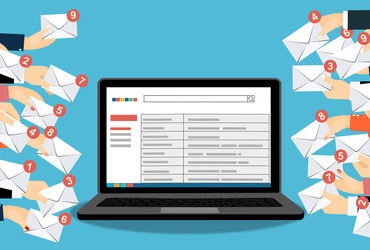
![]() Insights
Insights
Establishing a website in a new market can take time, which is why it’s essential to make link acquisition a central part of your SEO and digital PR strategy. But unfortunately, our International team often discovers that clients skip building links at a local level when localising a website for a new market.
Link acquisition allows you to compete effectively against local established competitors. And with backlinks, you can increase traffic and visibility, as well as gain higher authority for your website.
In this article, our team of mother-tongue digital marketers share seven tips to aid international link building efforts, which will grow brand awareness and increase traffic to your website in new global territories.
Identifying and making use of the news publications, social media platforms, and websites your target audience is engaging with is one of the most effective ways to ensure they interact with your campaigns. While trusted and influential sites in the West include specialty newspaper websites, magazines, and bloggers with solid followings, popular sites in other parts of the world can be vastly different. For example, in China, forum sites are the dominant and authoritative platforms users find information. However, from a Western SEO perspective, these platforms are often considered less trustworthy.
This assumption is due to Western equivalents having content of little value or interest. In Eastern countries, these platforms do include valuable and credible information, and without this regional knowledge, your team would miss a critical opportunity to build links. By localising your approach toward your new audience’s expectations and their preferred communication messages, you’ll get the most from your content marketing link building campaigns.
To create successful international link building campaigns with content that’s relevance in any market, you need to start by identifying what the main hook is for your regional audience. Taking the time to understand how your brand speaks directly to that regional hook is how you distinguish your brand from strong local competitors. Determining which angle is persuasive and how to combine it with your brand message is the most effective way to build links.
-Identify how your universal content is relevant to current local news, trends, and topics of interest
-Regularly screen market news publications and key influencers for opportunities to “hijack” traffic
-Build and maintain relationships with journalists and media correspondents. They have the inside scoop on what is happening at their publication – hopefully, they will share it with you when it is relevant.


We often find that local blogs and media publications link to a brand’s parent site if there is no localised version for their market. When this happens, your team should contact these publications and ask them to redirect any links to the relevant local website once it’s live. While this international link building strategy does involve removing quality links from the parent site profile, redirecting links to the relevant site allows a better experience for users and is viewed more favourably by search engines.
Losing a few authoritative links, particularly those driving little to no relevant traffic, is unlikely to have an enormous impact on a parent site. However, gaining relevant and authoritative links for a new site, through auditing international links for their overall quality, will massively benefit your newly localised landing page.
Online publications and media sites often have multiple localised websites that cover news in different markets. Content and digital PR campaigns on the parent site are translated and covered on each child site, with links pointing back to the parent site where the campaign was executed.
It’s worth checking influential sites where the parent site has gained links and coverage to see if any are directed from localised campaign coverage. If they are, you can refine the story by localising the data, quotes, and case studies for the individual market. Your team can then contact the editors or site administrators and offer them a fully localised and relevant story for that market.
Assessing and downloading the backlink profile of local competitors is an ideal place to start when building up your own backlink profile. The audit will reveal which publications are citing your competitors and what type of content is earning links and whether you can replicate their international link-building strategies.
Specific competitors will likely have earned links through digital PR campaigns or ongoing partnerships that require time and budget. However, you can identify quick-win opportunities for link-building by arranging authoritative websites into categories based around specific industries. These sites may then link to businesses that offer similar products to those of the organisation you are part of.



Creating a roster of your company’s subject matter experts can help your marketing team select the relevant person to participate in local market media opportunities. Q&As with your company’s industry experts can appear in local publications, including high-authority websites.
Promoting the launch of your website to local press and industry publications through a press release is a reliable international link-building tactic. Your press release needs to provide insight into the company, its core values, and what your business hopes to achieve. A quote from an important figure – ideally at a local level – will also increase your chance of gaining local coverage.
Creating a tiered media list that includes national and regional websites, as well as specific websites about local industries, targets your outreach more effectively. It is also essential to create bespoke and localised communications for each tier you email. This is so your press release is relevant to their target audience and readership.
Building high-quality, relevant links can seem a daunting task, but these top tips for building backlinks in new international markets are effective ways to earn coverage, increase brand awareness, and improve the overall authority of your newly localised website.

![]() Insights
Insights

![]() Insights
Insights

![]() Insights
Insights